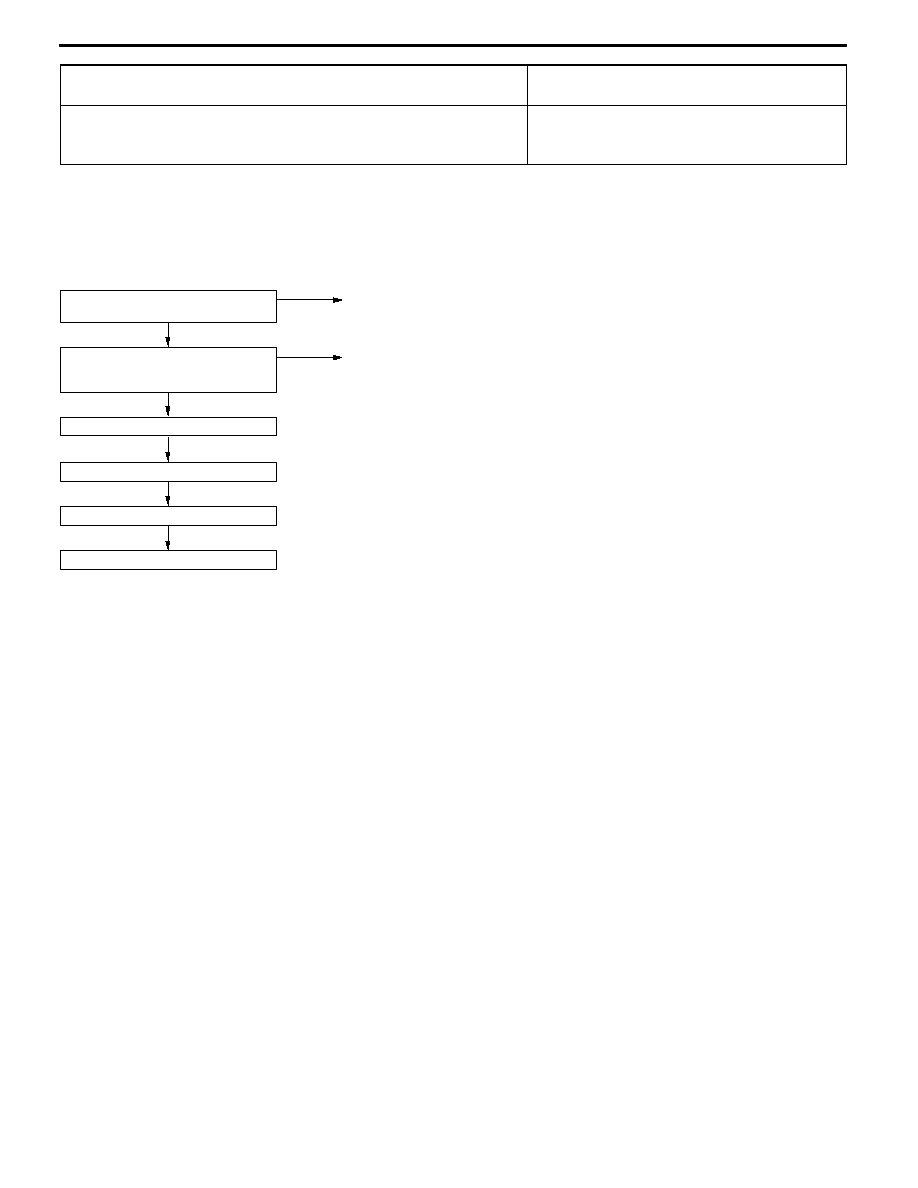Mitsubishi Lancer Evolution 7. Manual - part 188

MPI -
Troubleshooting
13A-51
Code No.P1610 Immobilizer system <Europe and
General Export-spec. models>
Probable cause
Inspection Range
D
Ignition switch: ON
Set Conditions
D
Improper communication between the engine-ECU and the immobilizer-ECU
D
Open or short circuit, or loose connector contact
D
Malfunction of the immobilizer-ECU
D
Malfunction of the engine-ECU
NOTE
(1) If the registered ignition keys are close each other when starting the engine, radio interference may
cause this code to be displayed.
(2) This code may be displayed when registering the key encrypted code.
NG
Replace the engine-ECU.
Check the trouble symptoms.
NG
Replace the immobilizer-ECU
OK
Check the trouble symptoms.
OK
Check the harness wire between the
immobilizer-ECU and the
engine-ECU, and repair if necessary.
NG
Replace
Check the following connectors:
C-202, C-130, C-118
NG
Repair